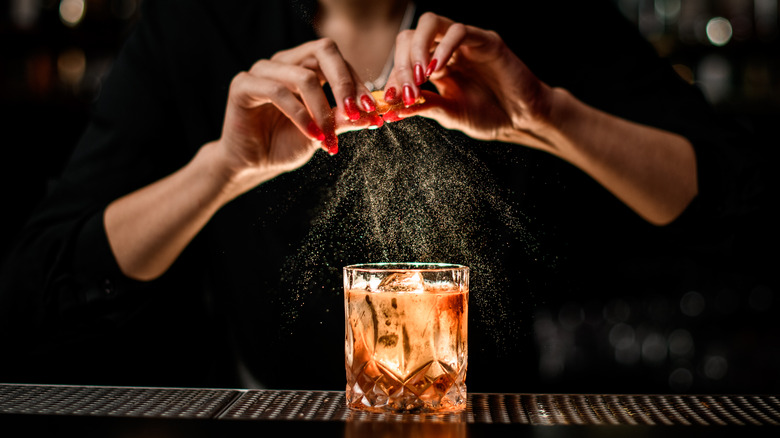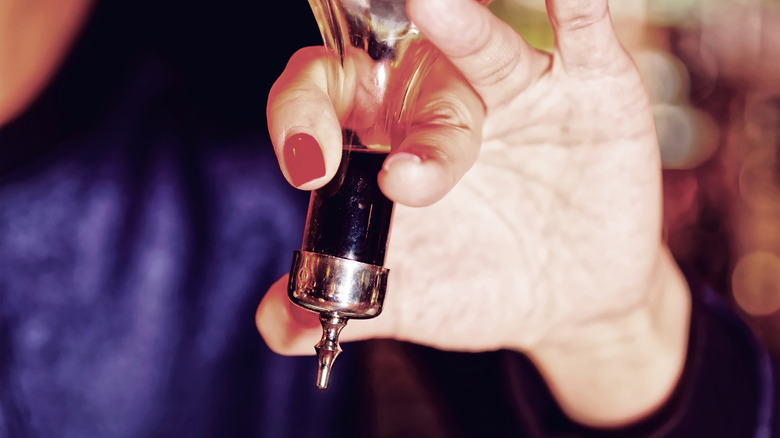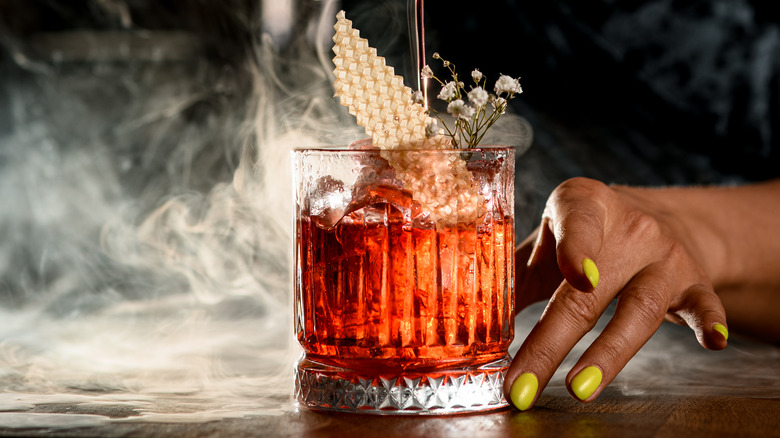Dash Vs. Splash: Know The Difference To Order At The Bar Like A Pro
Ever found yourself staring blankly at the bartender when asked if you want a "dash" or a "splash" in your favorite cocktail? Or, even worse, have you ever been behind the bar trying to decode the secrets of perfect cocktail-making only to add one instead of the other, ruining someone's entire drink?
We get it (and we've been there, too). Cocktail lingo is confusing, with differentiations between things like a splash and a dash so minute that it might not even seem important at the moment (rest assured that it is, at least among cocktail connoisseurs and expert mixologists).
But don't worry, it's fairly easy to break down the difference between a "dash" and a "splash" so you can impress your drinking buddies and order with confidence. Simply put: Splashes are larger than dashes. Now, regardless of whether you're a classic cocktail aficionado or into experimental libations, you won't be caught off guard when ordering your favorite concoction.
From Manhattans to margaritas, being aware of this subtle variation can have a large impact on the flavor of your drink. Armed with this knowledge, you'll be a certified master of the bar scene. Or, at the very least, you'll have some cool trivia to pull out the next time you order a round for you and your friends.
A dash is less than a splash
Let's clear up the confusion once and for all: a dash is tiny, usually around 1/32 of an ounce, or, as the European Bartender School teaches its students, a simple shake of a bottle. The measurement is typically used for strong, flavorful ingredients such as bitters or hot sauce. A dash of bitters can add depth and complexity to a cocktail. However, a dash of hot sauce in a jalapeño margarita or spicy Paloma can add a spicy kick you can adjust to taste.
On the other hand, a splash refers to a larger amount of an ingredient, generally around ⅕ of an ounce. It's typically used for less intense ingredients such as juice or soda. A soda splash can add some effervescence to a cocktail, while a splash of grenadine can add sweetness and color.
Knowing how to tell between a dash and a splash can make all the difference. Using too much of an ingredient can overwhelm the other flavors and ruin the cocktail's balance; using too little of an ingredient can result in an underwhelming or bland drink.
But don't worry if you don't get it just right. Dashes, specifically, are tough to measure, which is why a lot of bartenders use dasher tops. Don Lee, Cocktail Kingdom's Director of Product Development, even told Punch, "A dash is this elusive thing that really doesn't exist—much like the pinch, [it's] something you actually kind of do to taste."
When to order a dash vs. a splash
Knowing when to order a dash or a splash can determine whether you end up with a mediocre drink or a fantastic one. For example, the classic Manhattan is a strong cocktail that relies on just a dash or two of bitters to complement the rye whiskey and vermouth. A splash of bitters or soda water would completely alter the flavor profile and take away from the richness of the base ingredients. However, a well-made margarita relies on a splash of orange liqueur, such as triple sec, to bring out the tequila and lime juice. In this case, a splash works.
Ultimately, the key to ordering like a pro is understanding how each ingredient works within the cocktail. A skilled bartender can consider your preferences and adjust accordingly, balancing the flavors and textures of your chosen drink with just the right dash or splash.


